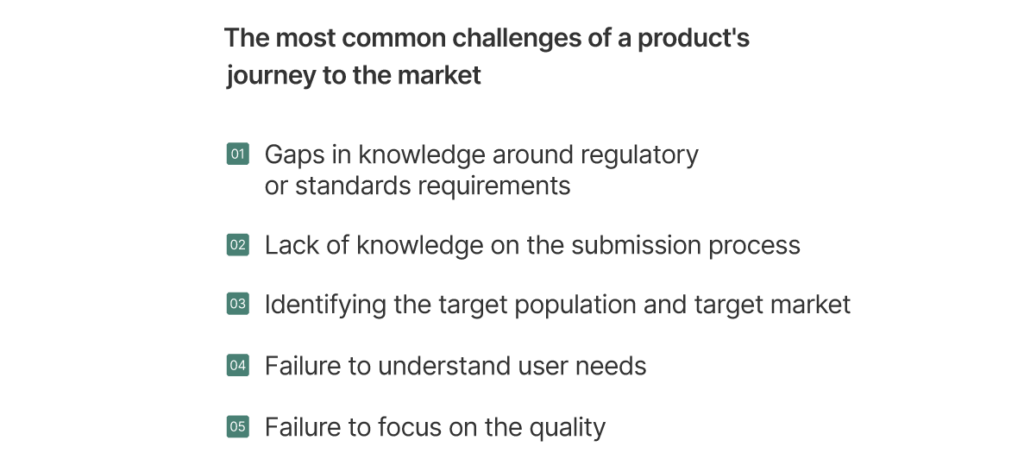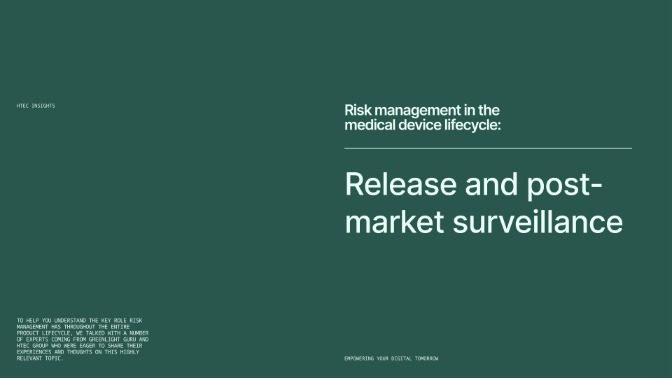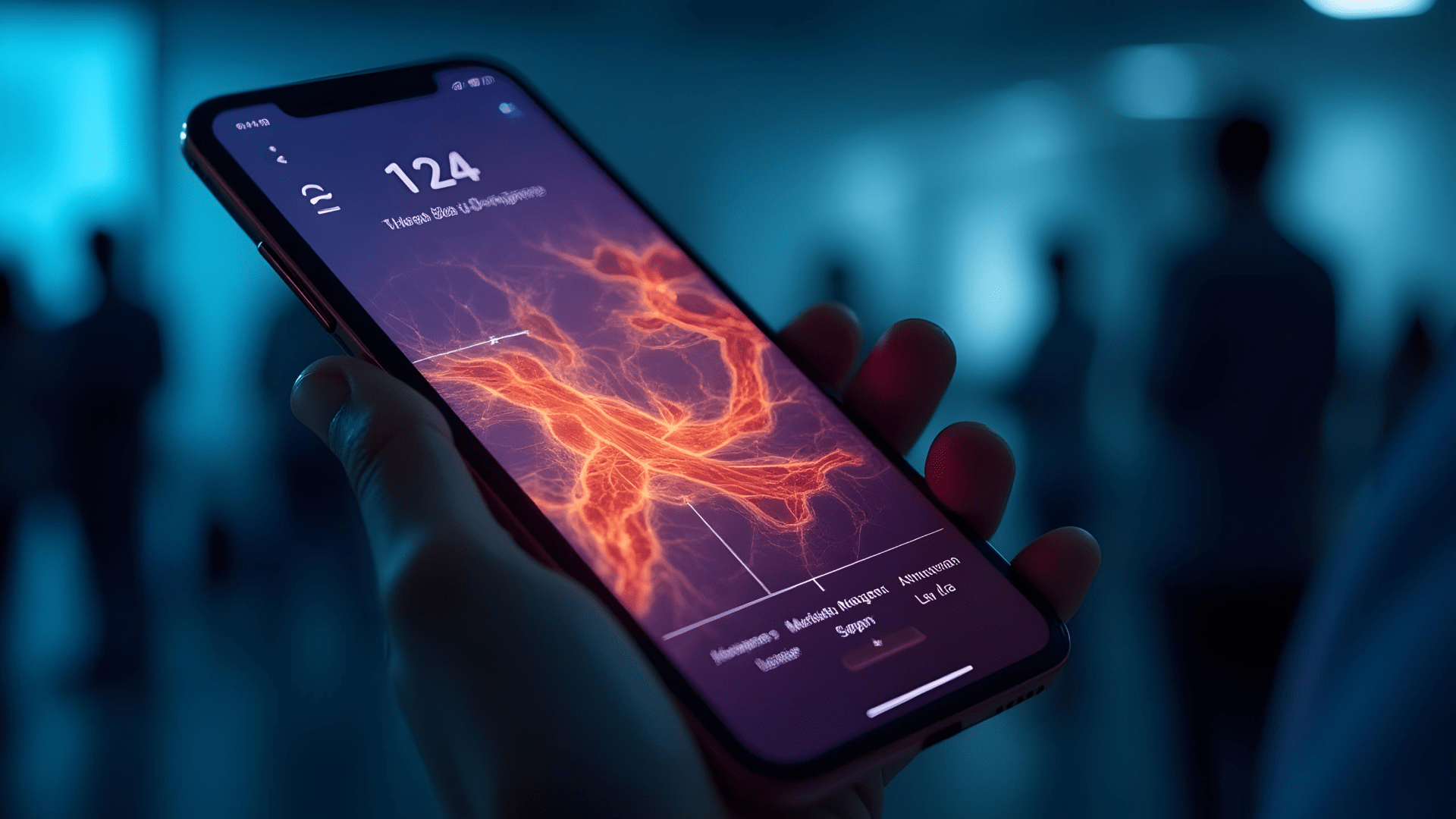Executive Summary: Risk management is the backbone of your medical device product development lifecycle—a process for turning risk into a value-added type of activity. To help you understand the key role risk management has throughout the entire product lifecycle, we talked with a number of experts coming from Greenlight Guru and HTEC Group who were eager to share their experiences and thoughts on this highly relevant topic. This is the second in the series of blogs that will dive deeper into managing risk throughout three key stages of medical device development: Discovery and Prototyping, Design and Manufacturing, and Post-market activities.
You’ve spent years developing a medical device and now you’re ready for another exciting endeavor: getting your medical device to market. But even when you place your device on the market, your job isn’t done yet.
Once it’s in the hands of the public, you must ensure the device continuously meets patients’ and healthcare providers’ needs by systematically monitoring it—a process also known as Post-market Surveillance.
To help you get a bigger picture of what managing risk in medical device development in the post-market stage entails, we talked with Greenlight Guru’s Medical Device Gurus, Laura Maher and Kendyl Williams.
Backed by software expertise and outstanding experience in helping companies build safe and secure digital health solutions and medical devices through industry guidance, they will explain the best risk management practices at this stage and demonstrate how their risk solutions can help companies manage risk in a smarter way.
Let’s dive right in!
Why do manufacturers frequently fail to bring novel devices to market?
Where do MedTech companies fail?
Laura and Kendyl shared the most common challenges companies face when placing their products on the market:

- Gaps in knowledge around regulatory or standards requirements – Different countries have different regulatory requirements, which are constantly changing, and companies are still struggling to grasp those changes. Learning the new regulations and what’s expected from them can be a long-winded process.
- Lack of knowledge on the submission process – Lack of understanding of how to regard data requirements and verification validation testing, how robust that testing needs to be, and what regulators are looking for.
- Identifying the target population and target market – There may be a misalignment between what the target population wants you to design versus what is actually feasible, especially if you are a contract manufacturer or a design and development firm.
- Failure to understand user needs – Sometimes engineers have an idea without determining the market or clarifying user needs. They start with this idea and try to make it work.
- Failure to focus on quality – A lot of startups fail to realize that they need to have a significant focus on quality as well as an understanding of risk in general, including supplier risk, manufacturing risk, and all the things that can go wrong in the process.
Laura explains that,

Poor quality is the number one cause of financial issues, regulatory issues, and fines. It’s a real headache trying to manage all of that. You can’t make a good product and be successful if you’re constantly fighting fires on the quality side.
– Laura Maher
Medical Device Guru at Greenlight Guru
According to Kendyl, it’s better to be proactive than reactive and to get a deep insight into what your clients will be using the device for. Otherwise, you may end up designing a product for one thing, only to realize it is being used for something completely different.
Why is risk management particularly challenging for medical device companies?
According to the recent Greenlight Guru’s 2023 Industry Benchmark Report, some of the major challenges in managing risk are:
- Lack of clear ownership of risk throughout the product life cycle
- Lack of post-market feedback
Laura and Kendyl agree on the following gaps that create these challenges:
- Failing to take care of the old products – While trying to build new products, companies often forget they need to take care of the old products. Even when you sign off on your risk management file, it’s still a living file. There are always going to be changes and updates. If the consumer finds the product to be difficult, too robust, or too challenging to use, they will probably opt for an easier one on the market.
- Failing to have a dedicated team of experts – To be able to navigate your risk management successfully, you need to have a dedicated team of people who will be focused on gathering user preferences and feedback.
- Lack of clear understanding of costs – Dealing with so many daily issues can lead to a lack of bandwidth, causing product maintenance costs to be put on the back-burner.
- Lack of knowledge of what needs to be done
How does Greenlight Guru’s AI-powered Risk Intelligence revolutionize the way MedTech companies approach risk management?
How do we figure out our risks and their probabilities, especially if we’re not working with clinicians?
Are we in alignment with other products on our market?
Is there a spike in complaints in a certain area, or did we not put our probability levels at the right rating?
Are we seeing a way higher probability of occurrence limit for a certain mode of failure rather than a similar product on the market?
These questions puzzle companies when it comes to proactively identifying, documenting, and mitigating risks, according to Kendyl.
If you’re a newer medical device company and you don’t have any legacy products, you might have no idea of the risk to your product. You might not consider certain things that aren’t as obvious, such as biocompatibility or usability issues.
Also, a lot of times, companies have based risk matrices on previous products from the same company, which may be inclusive, but there could still be some gaps. For example, the device might become a bit outdated depending on what the new state-of-the-art standard is.
AI in medical devices and healthcare holds enormous promise.
Kendyl points out that Greenlight Guru’s Risk Intelligence is really going to help take a lot of the “dirty work” out of the research.
At its core, the Risk Intelligence tool:
A: Transforms a very subjective process into a more objective process, which means safer products
B: Gives you a better understanding of the risk landscape
Kendyl further explains that Risk Intelligence is going to help people be proactive about their risk management file and capture some risks they might not have thought about. It will enable companies to have a baseline of what things could go wrong or what has gone wrong with similar products.
Laura adds that AI-powered risk management solutions can bring a world of experiences and understanding of a certain product class. She explains:
It allows companies to have the connectivity within the rest of their workspace and enables their multiple teams to work on the same file at once without any issues. I see nothing but excitement about moving to this approach.
Laura finally adds that Risk Intelligence cannot replace human effort because we still need human creativity, a critical part of the entire process:
Humans’ creativity and empathy are such important parts of the process. Being able to use a tool that makes our jobs easier and makes it less subjective and more objective, gives us more time to be creative and focus on new next-gen products that will change people’s lives for the better.
What are the common sources of post-market data, and how are they integrated into risk management?
You know the old saying, the customer knows best?
To get the post-market data and integrate it into your risk management, you need to be reliant on your customers’ feedback and report their complaints. Complaints and adverse events are the most common sources of data, especially in the US.
And it doesn’t all come down to a number of complaints and adverse events. It’s also about how you manage them. You need to prioritize events and always keep track of both minor and more severe ones as you never know what impact and frequency they might have in the future. Kendyl explains:

I’m fairly convinced that the universe brings all the events and complaints upon you at the same time. So, just prioritize. Even if something is of a lower priority to deal with that day, it doesn’t need to fall off the list. Having a one-stop shop within Greenlight Guru and a more collaborative effort can definitely be helpful.
– Kendyl Williams
Medical Device Guru at Greenlight Guru
Most importantly, be proactive — to drive innovation within your product, you need to enable users to know what their options are for providing feedback, both positive and negative. Listen to your closest ones, your mother, your sister, best friend to learn about the issues that may occur. Sometimes that personalized approach can inspire us to reflect on our efforts and ask the most important question “Why do we care about this?”
What makes risk solution software stand out from the rest of the on the market, particularly in the post-market phase?
While MedTech companies tend to focus their efforts on managing risks throughout the entire product lifecycle, they sometimes fail to do so because they don’t have the right tools. Having to manually check through a giant Excel file to make sure that you have everything right is time-consuming, disconnected, tedious, and susceptible to errors.
There’s a lot more usability in the platform.
Laura emphasizes that,
From a quality perspective, I’d much rather have a piece of software as I know it is going to provide me with correct and not corruptible results.
Connecting quality processes with customer post-market feedback in one place allows you to make audits, see the big picture, and manage the whole process. It will save lots of time normally spent brainstorming, researching, and documenting hazards, as well as trying to estimate probabilities and severities.
Greenlight Guru’s Risk Solutions is a far more efficient way of doing this as opposed to pulling the document down from one workspace, looking at an email from someone else, reporting back to them, and then just hoping you got your line item right and that the information is still correct.
Ready to experience the new era of risk management?
Greenlight Guru’s Risk Solutions is a one-stop shop for MedTech companies—it truly gives them a starting point on their journey of managing risk throughout the entire product lifecycle.
Greenlight Guru and HTEC Group are on a mission to advance medical device quality management and help medical companies further improve the quality of life for their customers.
Get your free demo of Greenlight Guru’s Risk Solutions or connect with Laura Maher and Kendyl Williams to learn how Risk Management Solutions can help you transform the way you manage risks.




